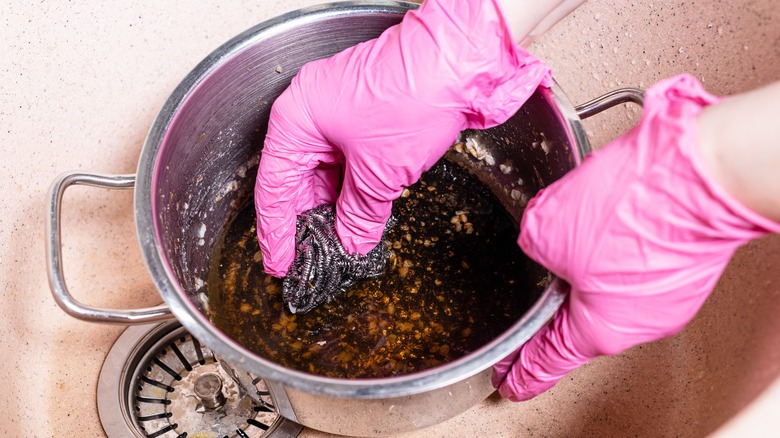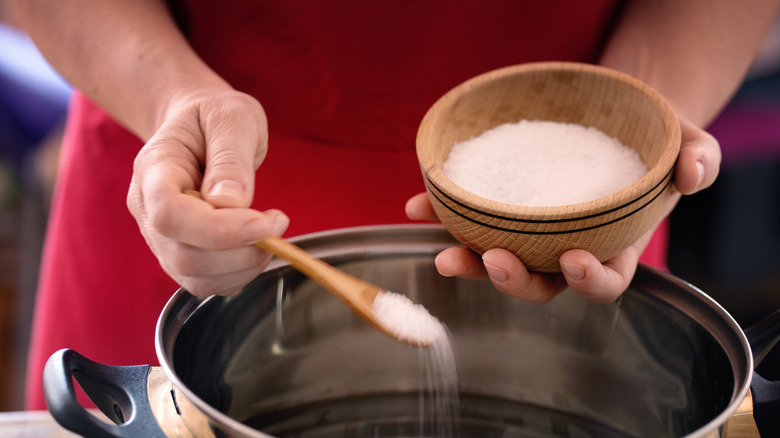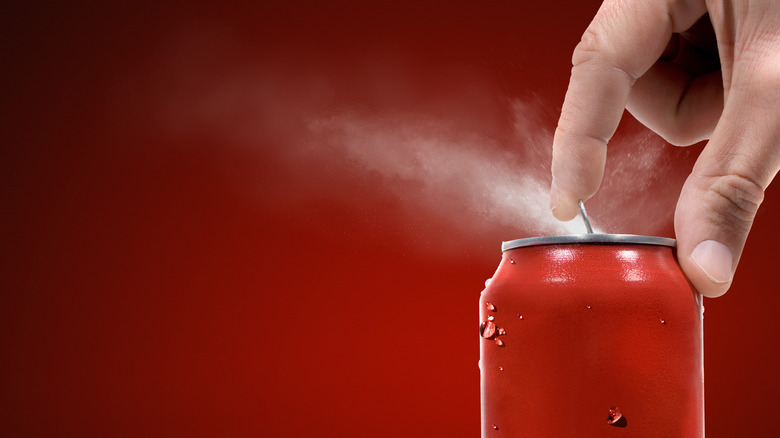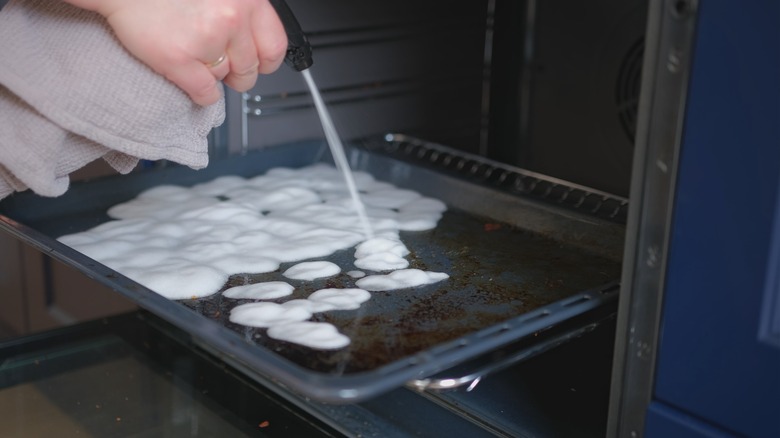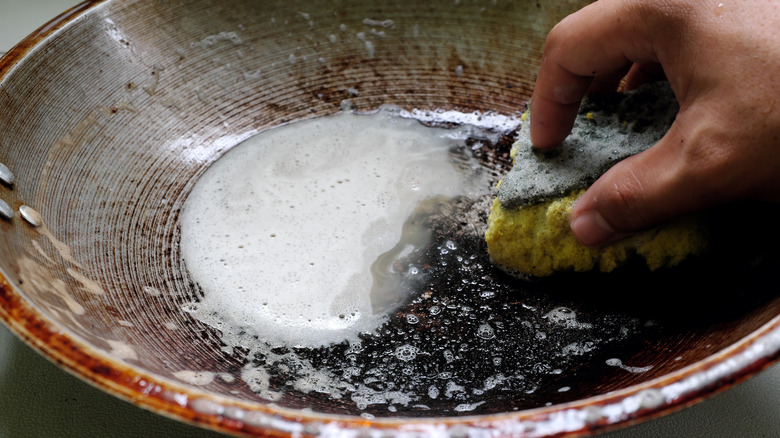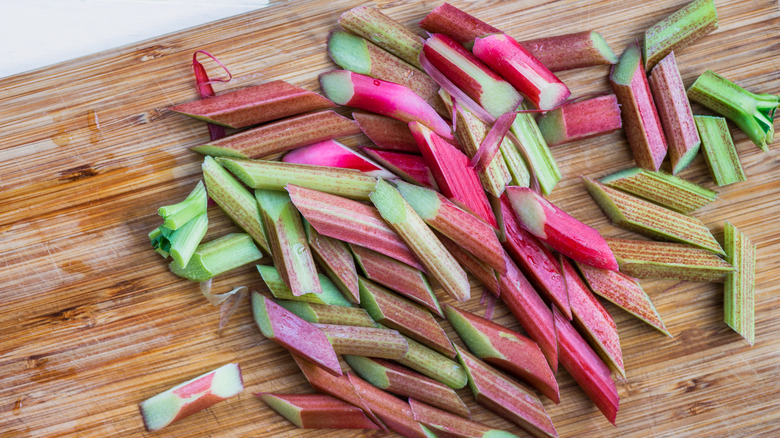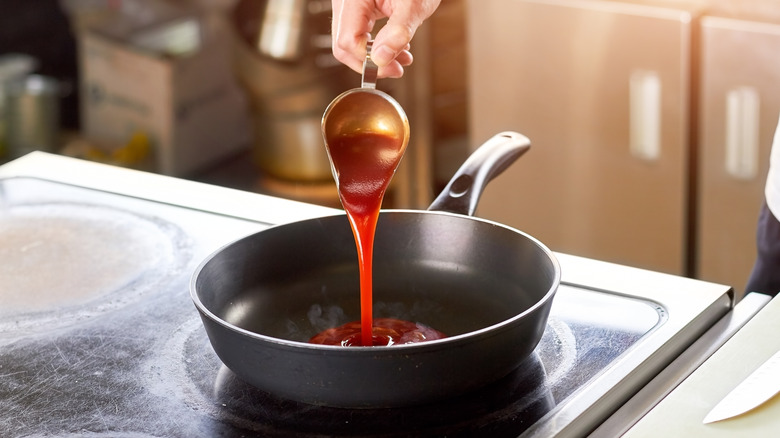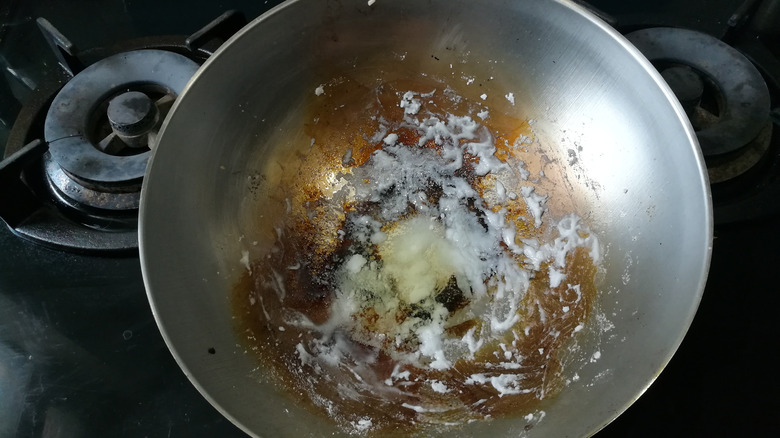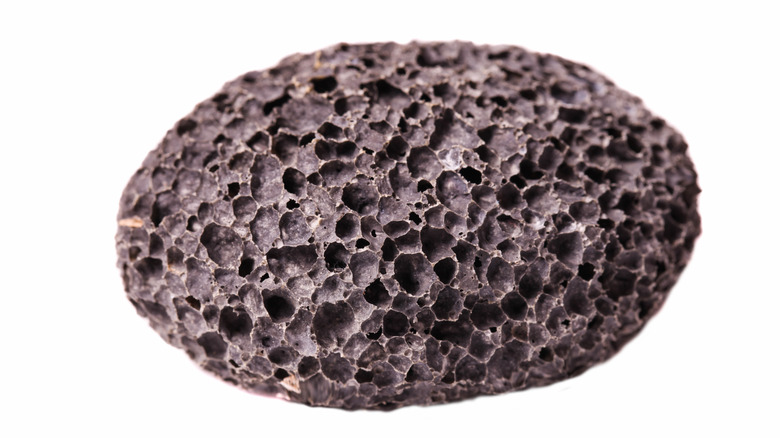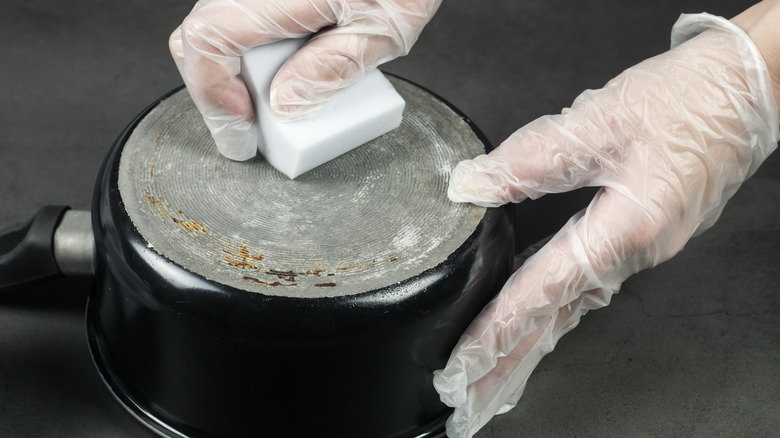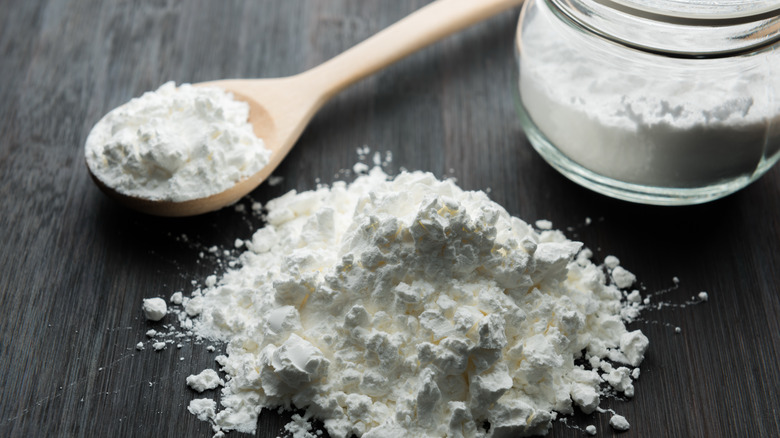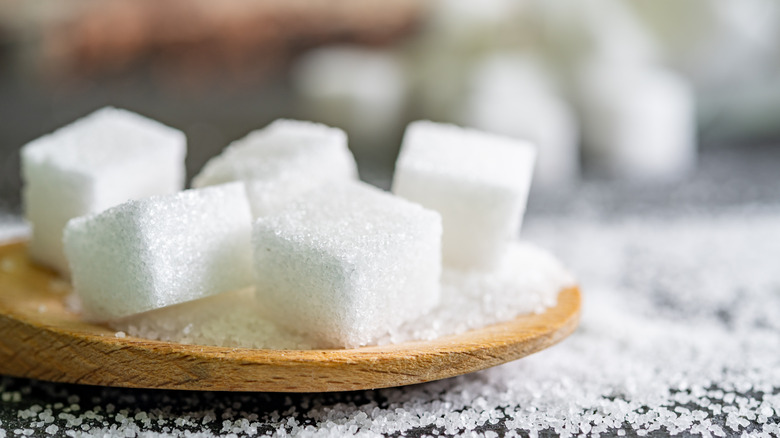Secret Ingredients That Remove Stubborn Burnt Pan Stains
When you cook, accidentally burning or scorching a pan makes cleaning a nightmare. Instead of being able to enjoy your food and clean up quickly, you get stuck scrubbing the burnt-on mess. However, you have a host of secret ingredients around the house that you can use to get it off without damaging the cookware. Instead of spending hours soaking and scrubbing, or using harsh chemicals, simple things like sugar cubes or a blob of toothpaste can save your pans. Learning what everyday household staples double as powerful cleaning allies can change your entire cleaning routine.
As a bonus, these methods can save you effort and time, as well as help you avoid more traditional chemical-based cleaning methods that may damage your cookware. Figuring out that a light layer of cornstarch or a quick scrub with a magic eraser can make your pans shine is a game-changer. They're easy, practical solutions, and many of them come backed by professional cleaners. So, let's dive in and see how you can put these secret ingredients to work on your burnt pans.
Salt is a gentle scrub
Salt is an effective way to clean burnt pans, and the first thing to do is figure out how much salt you need. Sprinkle a thick layer of salt onto the burnt portion and then pour enough water into the pan to cover it. Put the pan on the stove, turn on the burner, and heat the water until it's just about to boil. You won't need a rolling boil for this hack; getting it hot is enough to work. Turn the heat off and leave the pan to sit until the water cools. Afterward, use a sponge or scrubber on the burned areas. This hack works well for non-stick pans because you don't use any harsh chemicals that could damage the cookware.
Salt's physical properties make it great for this cleaning task. Since it's a gentle abrasive, it'll get into the burnt residue and lift it without scratching anything. Water dissolves it into a saline solution that breaks down the burnt particles. Heating it up makes it more effective because the water softens the burned gunk, making it easier to scrub away. This method has anecdotal evidence to support it, so has a reputation for being a practical cleaning hack.
The acidity in club soda and Coca-Cola does the job
Club soda and Coca-Cola are very effective for helping around the house, including getting burnt-on food out of your cookware. When you finish cooking, let the pan cool, and then pour cola or or club soda over the burnt areas. Let it cool to room temperature. Afterward, get a sponge or scrub brush and work on the affected areas. The liquid started breaking the burnt residue's bonds, making removing it easier. It's best to use this method right after noticing a burn to prevent the mess from hardening and sticking more firmly.
Both cola and club soda are carbonated and mildly acidic, which is the key to their effectiveness. The carbonation gives a light fizzing action when you pour it, which loosens and lifts up the burnt gunk. While it's primarily anecdotal evidence that backs this hack, it's gentle enough to use on pans and lowers your risk of damaging anything.
Hydrogen peroxide can work with other ingredients for a stronger clean
You most likely have hydrogen peroxide in your first aid kit, but it also works to help pull burnt residue from your cookware. Once your pan is cooled down, pour a thin layer of 3% hydrogen peroxide over the burnt area. Sprinkle a small amount of baking soda into the mixture to get a paste-like substance. Leave it alone for 10 to 15 minutes; you should see a quick bubbling action as it combines. Then take a sponge and gently scrub, but you should see the burnt residue starting to pull away from the pan without having to really scrub.
Hydrogen peroxide works to get rid of stuck-on food from pots and pans because of its chemical properties. It's a very mild bleaching agent, breaking down the burnt spot's carbon compounds and making it not stick to the surface. Adding the baking soda releases oxygen molecules and bubbles that foam to lift the stains. Also, baking soda is a very light abrasive, and this helps you scrub the cookware without scratching it. Even though this hack's effectiveness is mainly backed by anecdotal evidence, companies like Whirlpool claim it works with decent results, especially if you combine it with boiling water and dish soap for a stronger cleaner.
Cream of tartar is useful for more than baking
Cream of tartar helps with baking projects, but you can also use it to clean. Make a thick paste by combining a few tablespoons with cool water or vinegar. Carefully spread it onto the burnt areas, and let sit for 15 to 20 minutes. Next, use a sponge or brush to remove the burnt residue and then rinse your cookware. The burnt residue should start lifting away from the pan's surface with light pressure. If it doesn't, you can fill the cookware with a quart of water and a few tablespoons of cream of tartar, and boiling it before you scrub.
The mild acidity in cream of tartar is why it works on this chore. The acidity is strong enough to help strip away the burned stuff without damaging the pans. It starts breaking down the burnt molecules, making them easier to scrub off. It dissolves these residues while giving you a safe and non-toxic cleaning agent.
Rhubarb makes more than tasty desserts
When rhubarb is in season, you probably don't think about going out, cutting some, and using it to clean. However, it can help get rid of burnt residue on your cookware. Get a few rhubarb stalks and cut them into small pieces, enough to cover the bottom of the pot or pan. Cover with water and bring it to a boil. Reduce the heat and let it simmer for a few minutes; then let it cool before removing the rhubarb and scrubbing. The burnt residue should be much looser and easy to remove.
The reason rhubarb works to help you clean is its natural acidity. The oxalic acid that seeps from the rhubarb into the water will slowly start breaking down the burnt spots. Since it's a weak acid, it helps tackle the grime without damaging the pan, especially non-stick surfaces. The anecdotal evidence that supports rhubarb's cleaning power notes that oxalic acid is the same ingredient in popular cleaner Bar Keeper's Friend, which is well-known to be effective at cleaning burnt-on gunk.
Tomato sauce can work on light stains
Once your scorched pans cool down, spread a thick layer of tomato sauce onto the burnt spots so that they're completely covered. Set it aside for an hour or two, up to overnight. Use a scrubbing brush to remove the residue, which should be loose and easy to lift. Rinse your cookware under warm water to get rid of the debris and tomato sauce. If this process doesn't completely remove the mess the first time, repeat it. It should be noted that ketchup works better on lightly burnt spots.
The reason tomato sauce works is tomatoes' natural acidity. They have malic and citric acids, and they also have a slightly acidic pH level. So, once the tomato sauce sits on the burnt grime, it'll break down the carbonized food particles. It's very similar to soaking your pan in vinegar to get rid of stains, but the thicker sauce sticks more firmly to the cookware. Although this hack has mostly anecdotal evidence to support it over scientific research, and won't be as effective on very hard and thick burned areas, it can be used to remove discoloration from stainless steel.
Baking soda is a versatile cleaner
You can try dozens of baking soda cleaning hacks, including using it to bring back scorched cookware. Dump out any loose residue or grease from your pot or pan. Mix baking soda with water into a thick paste, and completely cover the scorched area. Leave it alone for at least an hour. Afterward, scrub it away with a non-abrasive sponge or brush. Finally, rinse with warm water to get rid of the stuck-on residue and baking soda paste. If the stain doesn't lift the first time, repeat these steps, but let the paste sit for a bit longer.
Baking soda is so good at cleaning burnt or scorched cookware because of its alkalinity. It interacts with the burnt grime and starts breaking it down. In turn, this loosens the grime and makes it easier to scrub it out without you having to apply a huge amount of force.
Pumice stone scrubs more than rough skin
You can use a pumice stone to clean the toilet or cookware without damage. Before you start, get the pumice stone and scorched pan wet to reduce the risk of scratching the surface. Holding the pumice stone firmly, scrub the scorched area in a circular motion. Keep a gentle, steady pressure as it breaks down the grime and you notice the burnt spots lifting. You will have to be patient, but once the stuck-on residue is gone, rinse the cookware clean. It works wonderfully on cast iron because you can scrub harder without damaging it.
Pumice stones are naturally abrasive. They're a type of volcanic rock that's formed when lava cools and traps gas bubbles, lending an abrasive, porous texture. The texture scrapes the burnt residue away from the pan without any chemicals. Unlike taking a metal scouring pad to the pan, this option reduces the risk of scratching the protective coating on the pan. There is also anecdotal success attached to this hack instead of research, but The FryOilSaver Company outlines how and why it works well.
A Magic Eraser can work like magic on burnt pans
You can use magic erasers to bring your cookware back to a sparkling clean. Dampen the magic eraser with water; it should be damp but not dripping wet. Gently rub it onto your pan's scorched spots, using firm and consistent pressure. Use circular or back-and-forth motions, and you'll see the stain and residue start to lift from the cookware's surface. Keep scrubbing until it's clean, regularly rinsing the eraser to remove built-up grime. Rinse the pan clean. Don't use it on non-stick pans because it can damage the coating, but it works well on enamel or stainless steel.
A magic eraser contains melamine foam, and this works like a very fine sandpaper. It has an open-cell structure that makes it abrasive and hard when it's dry but softer when you wet it. As you scrub, the small air pockets in the foam pull and trap grime and dirt from your cookware. This micro scrubbing action helps clean the smallest pits and grooves in your pan's surface to eliminate scorching without using harsh chemicals.
Cornstarch is an effective grime remover
Cornstarch can effectively remove burnt residue from pans and oven racks. Mix it with a small amount of water to make a thick paste that'll stick to your pan. Apply the paste onto the burnt spot. Leave it to sit for an hour to loosen up burnt areas. Then use a sponge or scrub brush to work at the grime. Burnt-on food should start to lift much easier, and you'll rinse the pan with water to get rid of any residue.
Cornstarch's physical properties are what make it such an effective grime remover. It's a mild abrasive, meaning it will physically break down the burnt residue when you scrub using it. It's gentle enough not to scratch your cookware but strong enough to break down the grease. Cornstarch is also very absorbent and can soak up the dislodged particles to make cleanup easier. While using cornstarch to remove scorched debris uses mainly anecdotal evidence to support it, it's a fairly well known remedy to strip grease and odors from clothing, carpets, and cookware.
Sugar cubes are a sweet hack
Do you know about the sugar cube hack to clean pans? Start by rinsing the pan to get rid of any loose debris, but don't wipe it dry. On a moist pan, scrub with the sugar cube using light pressure. The sugar cube will start to break down as you scrub. Swap out for a new cube when you can't get a grip on the first one. This is a good idea for more scratch-resistant pans, like cast iron or stainless steel. Once you finish scrubbing, rinse under water to wash away sugary residue.
The crystalline, hard structure of sugar works like a very gentle abrasive, and it'll dislodge a lot of burned grime without causing damage. It won't scratch, making it great for more delicate surfaces. Also, you'll get a slight paste as the sugar breaks down in the water. This hack is more anecdotal instead of being research-backed, but many have found it an eco-friendly method to restore cookware.
